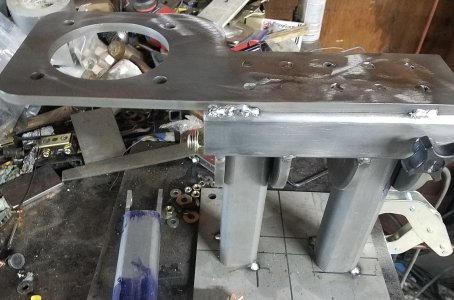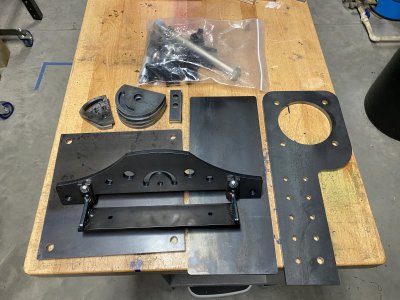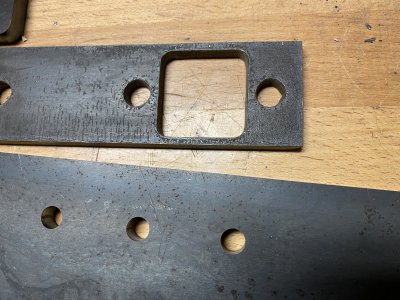Brian House already has a build video on YouTube which is much more professional than anything I could come up with. I will post some pictures of my build as I go along.
As for the $359 cost: I priced a piece of 3/8" A36 steel plate at Midwest Steel, which has the cheapest prices I could find. A 24" x 36" piece, enough to cut out all brackets with a little to spare, with shipping to me was about $185.00. I'm guessing it would cost at least $50 for the hardware, and maybe more if some parts had to be purchased in multiple quantities. So that's $235.00 not counting shipping for the hardware.
I have a CNC plasma table. However, the plasma process will not produce a cut comparable to the laser cuts House provides. Plasma (excluding high-def plasma, which most of us don't have) produces a noticeable bevel in the cut face. This is particularly apparent in bolt-sized holes.
So, by buying the steel myself, and sourcing all the nuts, bolts, knobs, etc. myself, I could have saved about $125.00. The amount of my time necessary to do all that is worth more than $125.00 to me. Plus the laser cut parts are superior to what I could have done with plasma.
Fist photo shows Brian's kit. I have already welded the platen bracket together. The second photo shows the difference between laser cut holes (bottom) and plasma cut holes (top). The plasma holes are in 1/4" plate, and would have been worse in 3/8".





